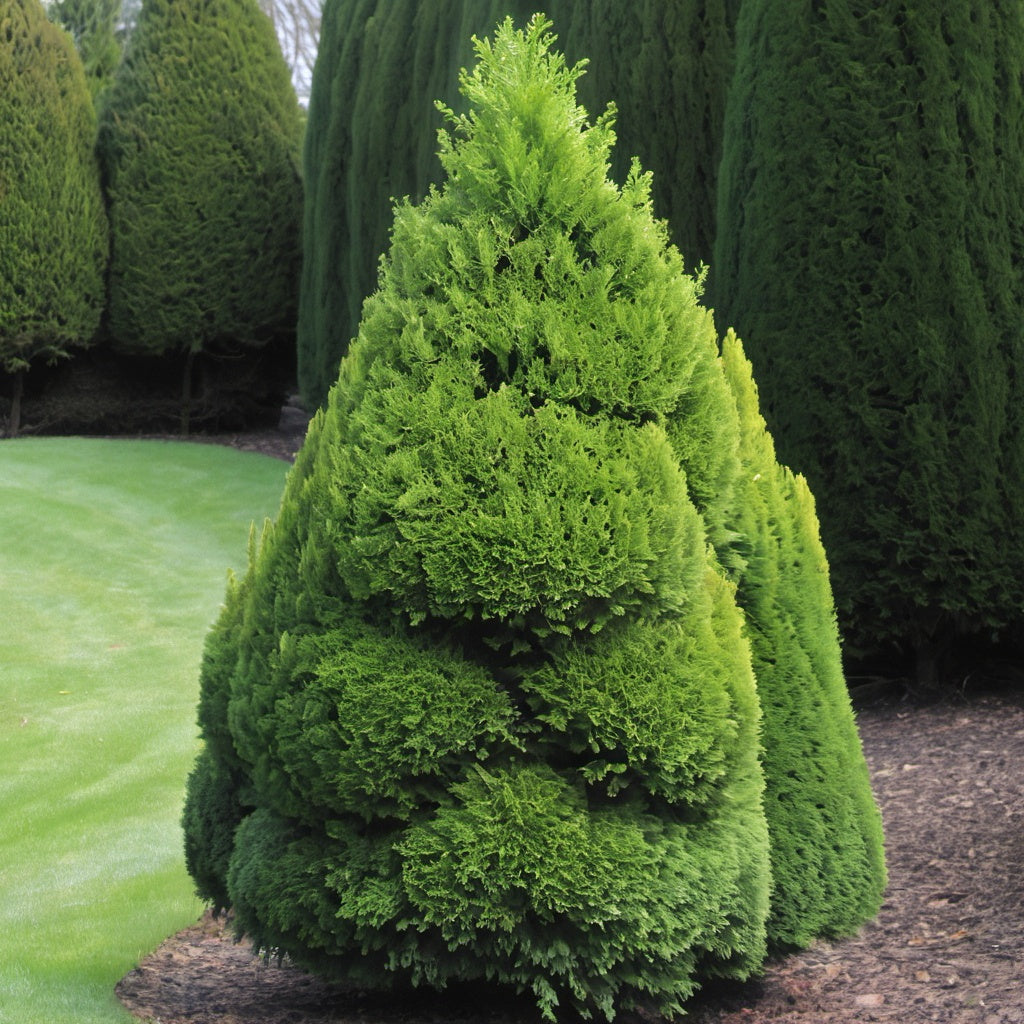Oriental Arborvitae Tree Seeds
Oriental Arborvitae Tree Seeds
Couldn't load pickup availability
Oriental Arborvitae Tree Seeds
(Thuja orientalis)
Thuja orientalis, commonly known as Oriental Arborvitae or Chinese Arborvitae, is a coniferous tree belonging to the cypress family, Cupressaceae. It is native to East Asia, particularly China, Korea, and parts of Russia.
Description:
- Size: Typically grows to about 10–20 meters (33–66 feet) tall, with a conical or columnar shape.
- Leaves: Scale-like and evergreen, tightly packed and arranged in flat sprays. The leaves are bright green during the growing season but may turn slightly bronze in the winter.
- Cones: The tree produces small, oval-shaped cones, around 1.5–2 cm long. The cones start green and mature to brown, opening up to release small seeds.
- Bark: Reddish-brown, thin, and peeling in narrow strips.
Habitat:
The Oriental Arborvitae is adaptable to various soil conditions, including sandy, loamy, and clay soils. It prefers full sun but can tolerate partial shade. It’s moderately drought-tolerant once established.
Uses:
- Ornamental: Often planted in gardens, parks, and cemeteries for its aesthetic appeal, especially in hedges and as a windbreak.
- Traditional Medicine: In some cultures, the seeds, leaves, and cones of the Oriental Arborvitae are used in herbal medicine, believed to have calming and healing properties. It has been used in traditional Chinese medicine to treat ailments like coughs, rheumatism, and excessive sweating.
- Wood: The wood is soft and light, not typically used for large-scale construction, but may be utilized for smaller carpentry tasks.
Symbolism:
In various cultures, Oriental Arborvitae is associated with longevity, immortality, and protection, making it a popular choice in sacred and memorial settings.
Care and Maintenance:
- Pruning: Regular pruning can maintain the shape and health of the tree, especially when used in hedging.
- Watering: Although drought-tolerant, young trees require regular watering to establish deep roots.
This tree is valued both for its decorative uses and its symbolic and medicinal significance in different cultures.
Zones: 6 to 10
Germination Range: 60-80%
Stratification Requirement: None required
Planting Instructions:
Planting
Plant the seeds in well-draining soil, ideally a mixture of potting soil and seed starting mix. Fill small pots or seed trays with this mixture, and gently press the seeds into the soil at a depth of about 1/8 inch (3 mm). Cover them lightly with soil, ensuring they are not buried too deep, as light aids in germination. Place the pots or trays in a location that receives indirect sunlight and maintain a consistent temperature between 20°C and 25°C (68°F to 77°F). Water the soil lightly to keep it moist but not waterlogged, as too much moisture can cause the seeds to rot.
Germination and Care
Germination can take 1-3 weeks, so patience is key. Keep the soil consistently moist, and provide indirect sunlight or use a grow light if needed. Once the seedlings emerge, continue to care for them by ensuring they receive adequate sunlight and water. As they grow stronger, gradually acclimate them to outdoor conditions by placing them outside for a few hours each day, increasing their exposure over time.
Transplanting
When the seedlings have grown to about 4-6 inches tall and have developed a strong root system, they can be transplanted into larger pots or directly into the ground. Choose a location that receives full to partial sunlight and has well-draining soil. Space the young trees appropriately, as Oriental Arborvitae can grow tall and wide. After transplanting, water them thoroughly and continue to monitor their growth, especially during the first few years when they are establishing themselves.
Share


